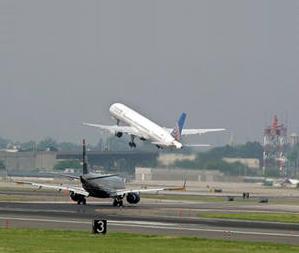|
|||||||||||||||||
|
|
|
|||
|
FAA Northeast
Airspace Improvements To Benefit Airlines And Passengers By Bill Goldston |
||||
 |
October 23, 2011 - The Air Transport Association of
America (ATA), the industry trade organization for the
leading U.S. airlines, commended the Federal Aviation
Administration (FAA) for implementing the next phase of
the U.S. Northeast airspace redesign project, which will
bring immediate benefits to airline passengers.
Most of the changes were made to the airspace over the
busy New York airports, enabling flights to operate more
efficiently in and out of the city?s airports, reducing
delays for passengers. The FAA's Eastern Region Air Traffic Division has redesigned the airspace in the New York/New Jersey/Philadelphia Metropolitan area to reduce delays in the area. The major airports experiencing severe delays are: Newark International (EWR), John F. Kennedy International (JFK), LaGuardia (LGA), Philadelphia International Airport (PHL). |
|||
|
The
closeness of the airports results in complex interaction between
Flight Crew and Air Traffic Controllers coordination and
circuitous flight paths. The current airspace environment was
inefficient for aviation users and FAA. From January-May 2011,
EWR, LGA, JFK, PHL, and TEB equaled 12% of total National
Airspace System (NAS) operations, 46% of total NAS delays.
The FAA
designed and implemented the New York/New Jersey/Philadelphia
metropolitan air traffic environment in the 1960s. The volume of
air traffic and the types of aircraft that use the airports have
changed significantly. So has the Air Traffic Control system. It
has grown beyond its procedural and operational capacity. As a
result the area services over 8000 flights a day and 4 of the
local airports are on the list of the 10 most delayed airports
in the United States.
?The
industry has long supported the redesign of the most congested
airspace in the U.S. These changes will lead to immediate safety
and efficiency benefits for airlines and passengers, and are a
key component of the larger NextGen air traffic management
project,? said Tom Hendricks, ATA?s senior vice president of
safety, operations and security. ?These changes were possible
thanks to FAA?s strong collaboration with the industry and
labor. While further work remains to be done, this template is
the best way to bring needed changes throughout the National
Airspace System.? |
||||


